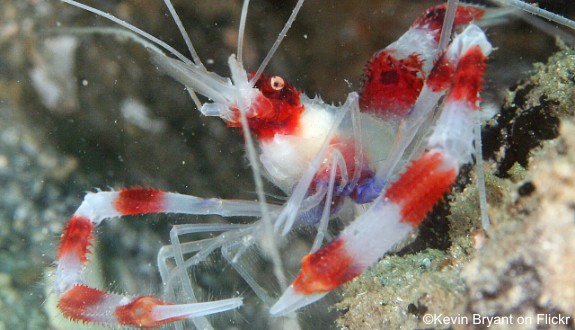

Alternative species (click on the thumbnail to see the card)
None (Yet!)
Names
Scientific name
Stenopus hispidus
Squilla groenlandica
Astacus muricatus
Penaeus borealis
Palaemon hispidus
Embryocaris stylicauda
Common name
Banded coral shrimp
Banded cleaner shrimp
Barber pole shrimp
Spiny shrimp
Rotweiβ-gebänderte Scherengarnele (DE)
Origin

Origin: Indo-Pacific, Caribbean
Biotope: it lives in the crevices of the reef, up to 40 m (132 feet) deep
Dimorphism

The female is larger than the male. The male sometimes has a darker back than the female.
Group
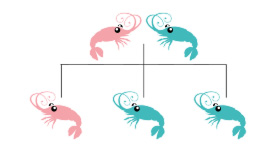
Stenopodidae
Volume

For 1: 100 L / 22 imp gal / 26 US gal
For a couple: 200 L / 44 Imp gal / 53 US gal
Parameters

T°: 24 to 27°C or 75 to81°F
pH: 8 to 8.5
Density: 1022 to 1024
Difficulty

Easy
Size
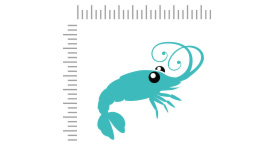
6 to 7 cm (2.4 to 2.8")
Longevity
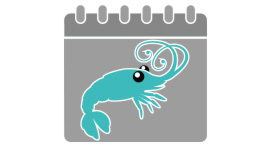
/
Living zone

Everywhere
Individuals
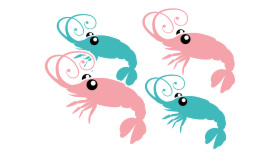
1 or couple
Food
How to feed the Banded coral shrimp?
Food
How to feed the Banded coral shrimp?
This invertebrate is a detritivore that feeds mainly on the remains of fish meals. It can also de-worm large fish.
Beware, if this shrimp is hungry, it can be quite aggressive, and attack shrimps, clams, gobiodon... To avoid this, you can put food directly in front of its cave, 2 or 3 times a week. On the menu: artemia, mysis, mussel pieces, granules, flakes...
Behavior
What kind of behavior does the Banded coral shrimp have?
Behavior
What kind of behavior does the Banded coral shrimp have?
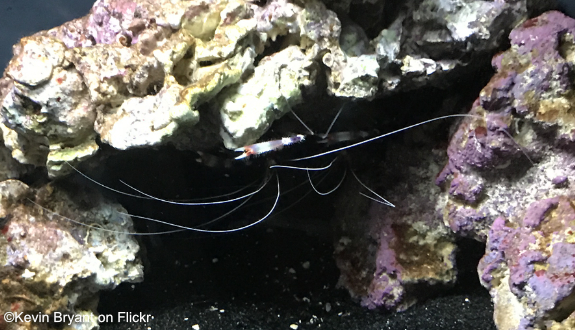
During the day, they spend a lot of time hiding in their hole. Only their large white antennae stick out. When it is available for de-worming, they gently shake their antennae to attract fish. Once the fish arrives, she leaves her hiding place and swims back to it. Her activity is rather nocturnal.
Cohabitation
Who can live with the Banded coral shrimp?
Cohabitation
Who can live with the Banded coral shrimp?
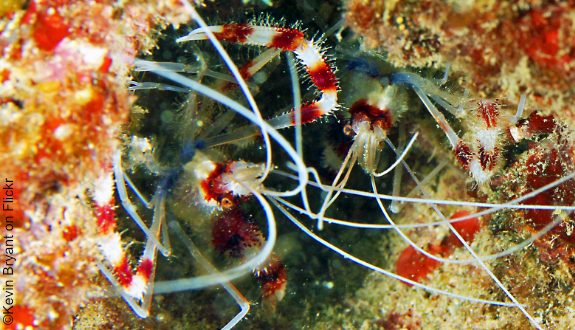
Calm and peaceful, it cohabits very well with the fish it occasionally de-worm. They can also cohabit easily with other beautiful shrimps, such as Lysmata amboinensis. Be careful however, when it has a hollow belly, it can be aggressive with everyone (see "Food").
On the other hand, it does not tolerate the presence of another member of its species of the same sex. This leads to fights to the death. For this reason, it is preferable to keep them alone or in couple.
Breeding
How to breed the Banded coral shrimp?
Breeding
How to breed the Banded coral shrimp?
It is quite difficult to breed this species in captivity. Sexual maturity in females is reached when the shrimp measures 3 cm (1.2").
Mating always takes place within days after moulting (usually within 48 hours). The female then places her eggs under her abdomen. They will remain there for the incubation time, i.e. about 2 weeks (if the temperature is 28°C-82°F).
The difficulty lies in the feeding of the larvae.
Its aquarium
Which aquarium for the Banded coral shrimp?
Its aquarium
Which aquarium for the Banded coral shrimp?
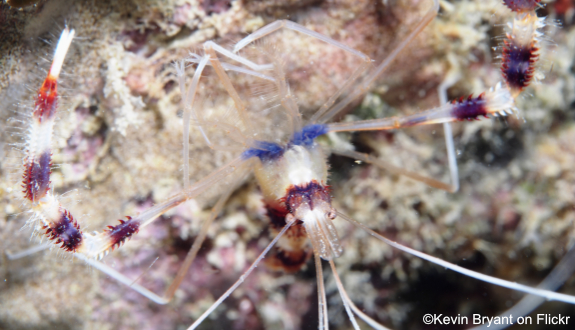
This shrimp is very respectful of corals and is perfectly indicated to live in reef aquariums.
It likes to hide among the rocks: form holes in which the shrimp will take refuge during the day, often hanging from the ceiling.
In terms of water parameters, maintain a calcium level between 400 and 450, and a magnesium level between 1,200 and 1,350 for a good development.
Good To know
Find all additional information!
Good To know
Find all additional information!
Robust and easy to maintain, it is a shrimp that is very popular with beginner aquarists.
Even if their body measures only 7 cm (2.8"), counting the antennae this shrimp has a nice wingspan of about 15 cm (5.9")!
Not very shy, you can gently accustom it to come and take food in your hand!
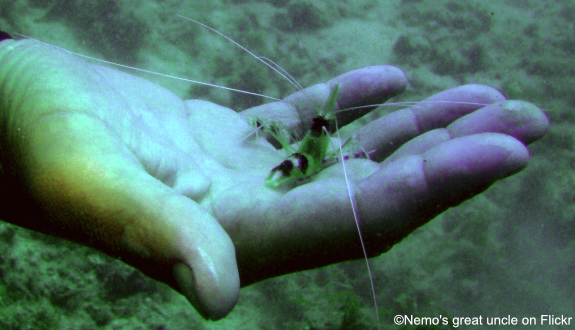
Yours photos!
Comments
Sort by:
Please login to post comments
